Our Environmental team is led by Maria de los Angeles Berru, who was born in the southern Ecuadorian town of Loja and has now moved her family to Macas where the field office for the Lost Cities – Cutucu Project is located.
Approach: While we’re exploring an area, we share custody of the environment with the local communities and our aim is to leave the environment the way in which we found it. If an area has been impacted by human activities, our goal is to leave that area in a better state than that in which we found it.
In compliance with requirements of the Ministry of the Environment, EcuaSolidus submits a comprehensive report on operations at six-monthly intervals.
A baseline environmental study was done by an external consulting group for the whole of Aurania’s Lost Cities – Cutucu Project area. That study was the key environmental step on which our permit to explore the area is based.
We do not have a fixed exploration camp at this early stage of exploration – all the reconnaissance and follow-up exploration is done out of fly-camps: clusters of tents with a central kitchen tent and a latrine located downwind. Water from adjacent streams is used for makeshift showers. Despite the water being crystal clear, it is heavily contaminated in most parts of the Cutucu. So water purification is critical to the health of our exploration teams – achieved with a combination of water filters, doses of chlorine and or boiling of water from streams prior to consumption. The reconnaissance exploration teams strike up camp and move to a new area every couple of days. These camps are remote and waste management is a key area of focus for our environmental team.
Organic waste from the kitchen is buried, and when the camp is struck, the latrine filled in, and all inorganic waste from the camp is carried out to the nearest road for pickup by EcuaSolidus personnel, or carried to the nearest airstrip for pickup by a fixed-wing aircraft. All batteries and other items considered as hazardous waste are carried out for disposal at government-regulated centres. All waste from the exploration activities in the field is weighed and reported to the Ministry of the Environment.
Our biggest environmental impact is scout drilling. In preparation for drilling, suitable offtake points for water are identified in local streams by the Water Management group. Flow rates are measured, and samples taken upstream, at the proposed offtake point, and downstream. Meanwhile, an area-specific environmental study is done that includes fauna and flora. Motion-triggered video cameras provide a glimpse of life in the jungle adjacent to our camps and our targets that have been identified for scout drilling.
Access paths are cut to the proposed drill sites and lined with logs cut from fallen trees. This arduous work is a key part of our effort to minimize erosion.
Drill pads are selected by the exploration geologists and an inventory is taken of the flora within the 6m by 6m area on which each drill pad is to be constructed. The topsoil is removed and stored, and the level platform constructed by hand. The platform is covered with a polyethalene sheet, the drill rig moved on-site. Once the drilling has been completed from each platform, the area is returned to its original slope, the topsoil replaced and seedlings from a nursery started by Aurania and now managed by one of the local communities, are planted in the ratio in which these indigenous species originally occurred in the area of the platform. The restoration of the drill platforms is done by the local communities under the guidance of Aurania’s Environmental Group. After a year, the drill platforms are almost indistinguishable.
Local communities harvest seeds of desirable environmental species which are planted and cared for in the nursery. Once the seeds have germinated and the seedlings hardened off, the seedlings are made available to other communities in the area. The species that are targeted for the nursery are indigenous fruits, nuts, hardwood and medicinal plants identified by the local communities.
An example of one of the indigenous superfoods is sacha inchi (Plukenetia volubilis) – a fast-growing vine that produces nuts in a star-shaped fruit. The nuts have a high protein content similar to red meat or peanuts (~28% protein). Approximately 48% by weight of the nut is oil – the oil is 48% omega-3, 33% omega-6 and 9% omega-9; it has 17 times the omega content of salmon oil. Sacha inchi was a staple in the diet of the Shuar people – but it was somehow forgotten. It is now being reintroduced from the nursery back into communities throughout the Cutucu where the older generation remembers it well. So far, the nursery has distributed approximately 1,000 plants of sacha inchi for local farmers in an attempt to start a small production that can be later commercialized in the form of manufactured products such as oils or pastes, giving an independent source of income for these communities.
An example of a medicinal plant that is common in the Cutucu mountain range is sangre de dragon – blood of the dragon (Croton lechleri). The crimson sap from the trunk of this tree is rubbed on cuts – providing a protective latex-like film, and the sap has an antibiotic element which aids with healing of the wound.
In compliance with requirements of the Ministry of the Environment, Aurania’s subsidiary EcuaSolidus, submits a comprehensive report on operations at six-monthly intervals.





